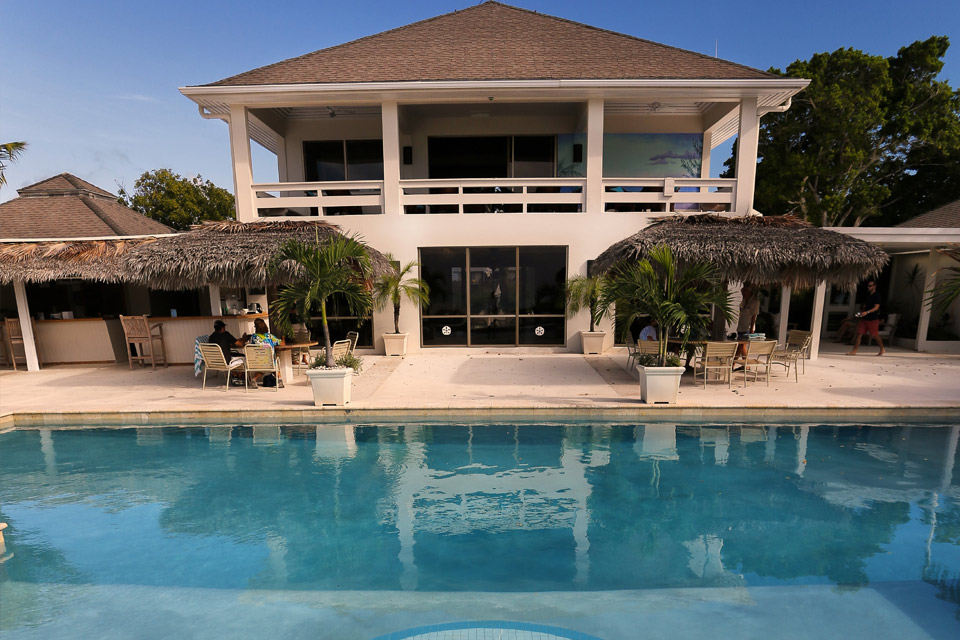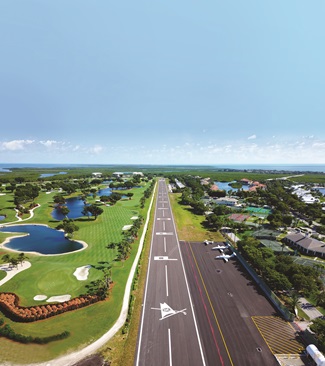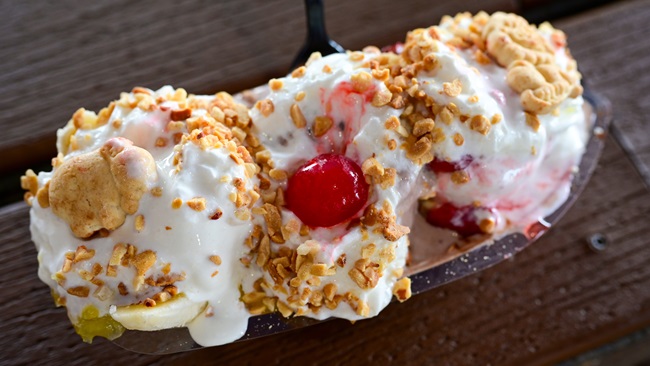Photography by Chris Rose
A luxury hotel at one of the world’s most idyllic beaches sees its paved, 2,500-foot runway both as part of its heritage, and a key to its future.
The Meridian Club is located on Pine Cay, a pristine, 800-acre island just 12 air miles from Providenciales (MBPV), the main international airport in the Turks and Caicos. The 13-room hotel (and many of the 38 private homes on Pine Cay) was founded in the early 1970s by U.S. general aviation pilots who regarded the island as a jewel at the center of some of the best scuba diving, sailing, and ocean sports on the planet.
“I’ve been flying down here my whole life—first with my parents, and now on my own,” said Eric Thunberg, 30, a video game company founder and general aviation pilot, who has made the 510-nm trek more than 100 times, primarily in his Mooney 201 or a Cessna 310. “It was fun as a kid to see all the airplanes that would come here: Skymasters, Widgeons, and King Airs.”
A DC–3 carrying supplies was the largest aircraft to fly in and out, and today one of the homeowners commutes in a Pilatus PC–12 turboprop.
The Meridian Club, whose anachronistic policies (no TVs in guest rooms, no cellphones in common areas, and cocktails at 6 p.m. sharp) cling to a bygone era, also regards its runway as a strategic asset. Managers are hoping to attract general aviation pilots, and possibly groups of pilots, willing to fly beyond the Bahamas.
Robert Krieble, 33, a Diamond DA40 pilot based in Montreal, Canada, regularly brings his wife and two children to Pine Cay via commercial airlines, and then flies throughout the Caribbean using his family’s Providenciales-based four-seat airplane.
“The British Virgin Islands, Guadeloupe, Martinique, the Dominican Republic, and Puerto Rico are all within easy reach,” he said. “One of my favorite things to do is throw some dive gear in the back of the airplane and just go exploring.”
Weather reporting and radar coverage in some portions of the region are limited, and Krieble says some of the most accurate forecasts come from a windsurfing website.
I recently flew a Cessna 182 between Fort Lauderdale and the Turks and Caicos with AOPA Photographer Chris Rose—a 4.5-hour flight that followed the Bahamas island chain. At an altitude of 7,000 feet, we were on an IFR flight plan and in touch with Miami Center almost the entire distance. And when we weren’t, we were in touch with Nassau Approach in the Bahamas, or Providenciales (which lacks radar).
Coming and going at Providenciales has an exotic feel to it. The recorded ATIS has a thick British accent, barometric pressure is given in QNH, and each pilot is told to report souls on board and fuel endurance. ATC instructions follow the ICAO format with terms such as “vacate” (instead of exit) and “backtrack” (instead of back taxi), and pilots are almost sure to hear both of those words since the massive east/west runway has no parallel taxiway.
Clearing customs in the Turks and Caicos is uncomplicated with U.S. passports, and pilots are required to file flight plans, even for trips as short as the jaunt to Pine Cay. Once there, a telephone call to the Providenciales tower gets easy permission for local flights below 1,500 feet, and in a Cessna 182 it takes less than an hour to circumnavigate the entire country.
“The roots of this place are as a fly-in destination, and I’m convinced flying is going to have a big role in its future,” Thunberg said. “For an adventurous pilot who wants to get out there and go some amazing places, it’s hard to top this.”
Email [email protected]
Amazing places
Resorts pilots will love
» The Meridian Club, Turks and Caicos 800-acre privately owned island with 2,500-foot-long runway.
» Crooked Island Lodge, Crooked Island, Bahamas 12-room hotel on a private 3,500-foot-long airstrip.
» Hawk’s Nest Resort and Marina, Cat Island, Bahamas 450-acre island resort has a 3,100-foot-long runway.
» Fernandez Bay Village, Cat Island, Bahamas Land at the New Bight Airport, 5,000-foot-long paved runway.
» Innocence, Exuma, Bahamas 681-acre private island with 2,700-foot-long airstrip.
» Old Bahama Bay Resort, West End, Grand Bahama Island Resort and marina with a 6,000-foot-long runway.
» Small Hope Bay Lodge, Fresh Creek, Andros, Bahamas Small resort at Andros Town, which has a 4,200-foot-long runway.
» Staniel Cay Yacht Club, Exumas, Bahamas Yacht club with 3,000-foot-long runway.
Travel tips
Native tongue
The islands of the Bahamas are predominantly English-speaking, although like any country, the native inhabitants have their own slang. Photographer Chris Rose wondered what a “shine pack” was when fresh fish was presented to be cooked. It’s aluminum foil (also known as “ferl”) packages to bake or grill the fish.
You’ll likely be greeted as “Chief” or “General.” You’ll fish in the “Great Blue River.” And when going to a party you’ll be “Spillygatin” and “dress down to a fowl feather “ (dress up). The taxi driver will be there “terreckly” and you will “reach” (arrive) at your destination, but if it’s “jam up” (too crowded) the driver will “back back” (go in reverse) to get you home. But you know all of this if you are “True True” (a native of the islands).
Ready to go?
There are 700 islands, cays, and islets in the Bahamas, which cover 100,000 square miles. “Bahamas” refers to the country or to the larger island chain that it shares with the Turks and Caicos Islands. The closest island to the United States is Bimini, often called the Gateway to the Bahamas. Abaco is to the east, and the southernmost island is Inagua; Turks and Caicos lies to the southeast. There are 64 public and private airports in the Bahamas and eight in the Turks and Caicos.
» Nassau. Nassau is the capital of the Bahamas and is the largest city in the islands. Its population is 250,000, about 70 percent of the entire country. Lynden Pindling International Airport was the first airport built in the Bahamas. It has two runways—14/32, which is 11,017 feet long, and 9/27, which is 8,323 feet long.
» Cat Island. Named after the pirate Arthur Catt, this island is 150 square miles and boasts an eight-mile pink sand beach. Mount Alvernia is the highest elevation in the islands at 206 feet above sea level. New Bight Airport’s Runway 9/27 is 4,980 feet long.
» Staniel Cay. One of 365 islands in the Exuma chain, Staniel Cay is famous for being the home of Thunderball Grotto, which is featured in the James Bond movie. The airport’s single runway, 17/35 is 3,000 feet long.
» Stella Maris. Located on Long Island in the southern Bahamas, it is said that Christopher Columbus deemed it “the world’s most beautiful island.” Runway 13/31 is 3,999 feet long.
» Crooked Island. Called “the best-guarded secret in the Bahamas,” Crooked Island is located in a shallow lagoon called the Bight of Acklins. Crooked Island Airport is located on Colonel Hill. Runway 9/27 is 3,500 feet long.
» Providenciales. Also known as “Provo” to locals, the majority of the population of the Turks and Caicos live on this northwest island. Providencials International Airport serves commercial carriers; Runway 10/28 is 9,209 feet long.
» Pine cay. This privately owned 800-acre island is less than one mile wide and just two miles long. The Meridian Club was established here in the 1970s. The private airstrip is 2,500 feet long.









